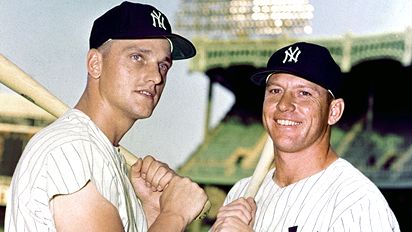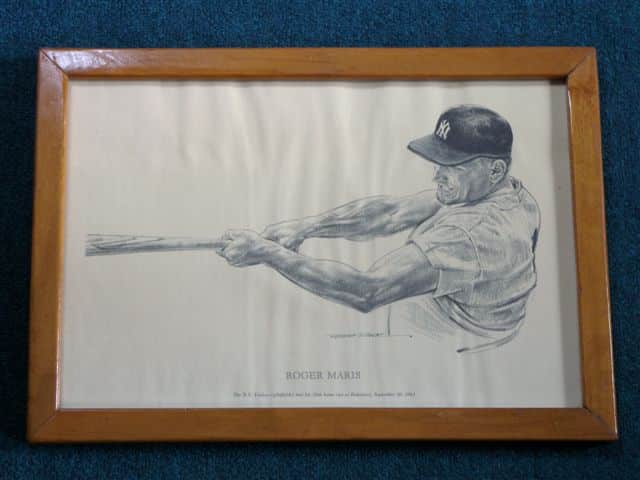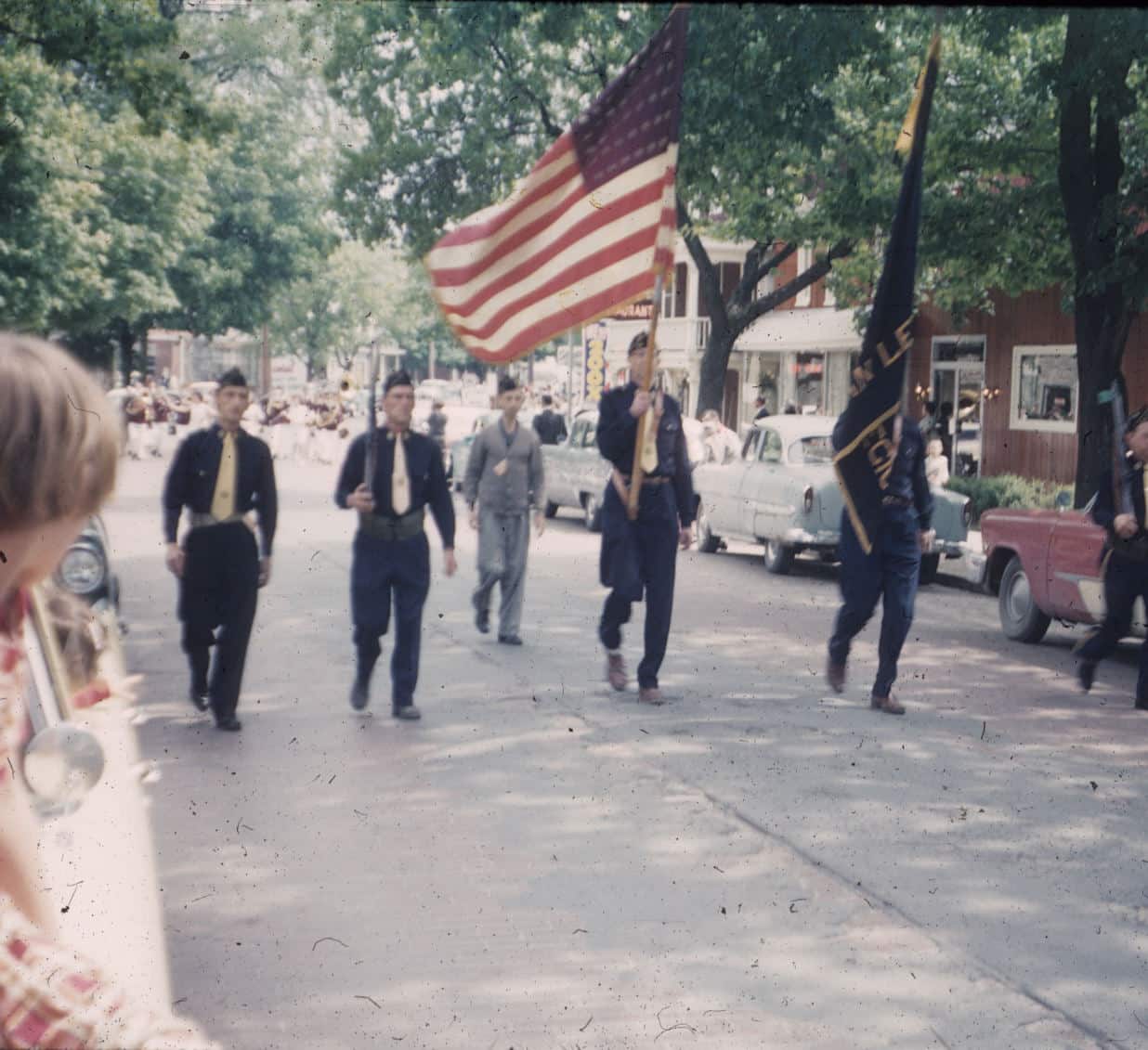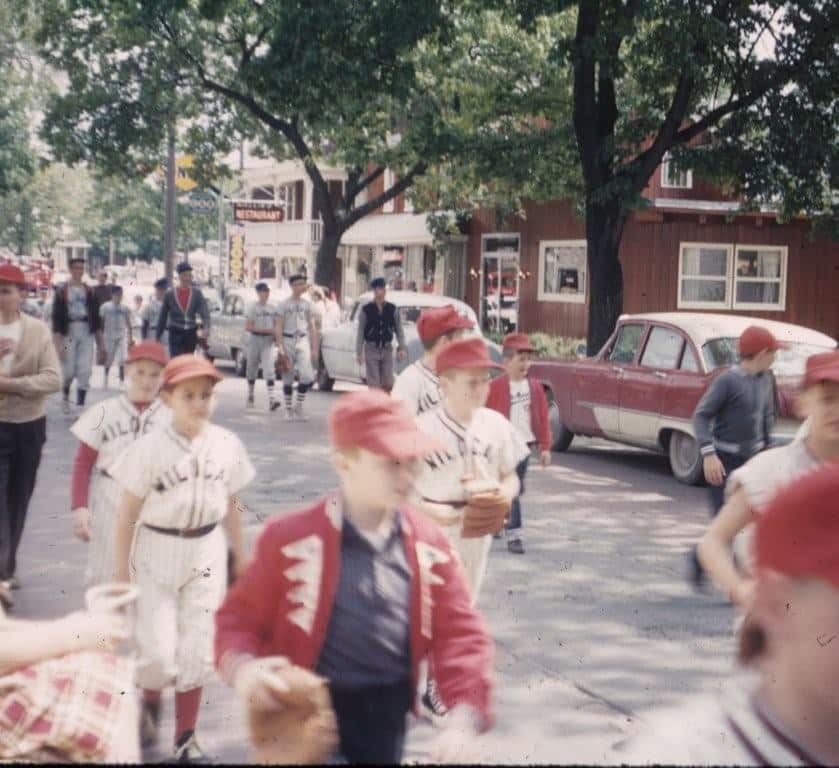In my last blog, I reminisced about spending summers with my mom’s parents, which led me to my career preserving cultural artifacts. And while my other grandparents didn’t shape my profession, my summers with them helped lead me to my love for baseball.
The relative isolation of another summer in the country wore on me as I grew older. I was ten now and ready to play organized baseball. Little League beckoned. My dad’s parents, who lived in the village of Greenwich, stepped forward and offered to put me up during the week so I could play ball. I was thrilled, but also apprehensive. I didn’t really know them as well as mom’s parents. Besides, my grandmother made the worst mashed potatoes I’d ever eaten. But it was the solution to my dilemma. I was ready to move on, and old enough to take a chance.
I quickly hit it off with my paternal grandparents and found myself growing up in those new circumstances. Though I’d long walked through fields and forests alone, walking upstreet (that’s what they called it)—a.k.a., downtown—by myself that first time was a very liberating experience, kind of like successfully riding a two-wheeler.
And, later, walking home with my baseball buddies after a game or practice was even more fun. Often, we’d stop by Stewart’s ice cream parlor. I couldn’t wait to spend the quarter that my grandmother had given me, while cautioning—seriously, I thought at first—not to spend it all in one place. (Back then, you really could split a quarter several delicious ways!)

Then 1961 came along, the year I became a Yankees fan. Like many, I watched intently as Roger Maris and Mickey Mantle battled it out for the home run record. Hit more home runs in a season than Babe Ruth? Impossible! After Mantle faltered, Grandpa saw me rooting for Maris and bought me this copy of a Robert Riger drawing showing Maris hitting his 59th homer off Baltimore’s Milt Pappas on September 20. Grandpa did the framing—he even made the frame itself. I treasure it to this day.
 As an aside, you’ll notice, this print is obviously not archivally framed. It would fare better if it were released from its current bondage and properly matted and re-framed. However, what needs to be preserved—in my opinion—is the complete package. As long as I maintain the framed print in a moderate environment, it will last a long, long time and will always remind me of my grandfather.
As an aside, you’ll notice, this print is obviously not archivally framed. It would fare better if it were released from its current bondage and properly matted and re-framed. However, what needs to be preserved—in my opinion—is the complete package. As long as I maintain the framed print in a moderate environment, it will last a long, long time and will always remind me of my grandfather.
Life was great in that small town. We Little Leaguers even got to march in the annual Memorial Day parade, something none of us took casually. But no parade was more special than the one in 1962, the year after my team, the Wildcats, had won the league championship. The banner we carried proudly declared us the “1961 Little League Champs!” My trophy says simply: “1961 Champs–Greenwich Little League.” Like the Roger Maris print, I treasure it to this day.

 Then it was Grandpa’s turn to go baseball crazy. When the N.Y. Mets came on the scene that year, he took to wearing a silly Mets beanie all the time. Mr. Met, we later called him, after the team’s mascot. Even Grandma is featured in my youthful baseball memories. Though I tired quickly of her weekly offerings of creamed corn, Grandma did make a mean grilled cheese sandwich while she washed my prized Little League uniform. Grandpa became the most avid of Mets fans over the next seven years, but passed away in 1969, just before the Mets won their first-ever World Series. Grandma lived until 1988, just long enough to meet her great-grandson, my son Kyle.
Then it was Grandpa’s turn to go baseball crazy. When the N.Y. Mets came on the scene that year, he took to wearing a silly Mets beanie all the time. Mr. Met, we later called him, after the team’s mascot. Even Grandma is featured in my youthful baseball memories. Though I tired quickly of her weekly offerings of creamed corn, Grandma did make a mean grilled cheese sandwich while she washed my prized Little League uniform. Grandpa became the most avid of Mets fans over the next seven years, but passed away in 1969, just before the Mets won their first-ever World Series. Grandma lived until 1988, just long enough to meet her great-grandson, my son Kyle.
Like Lew and Hazel, my mom’s parents, I miss them very much. I thank them for being there when I needed them—for putting me up (and putting up with me)—during those early ball-playing years. Not only did they help to make that period a time I will always recall fondly, but they helped foster in me a deep love for the game of baseball. We were all fans then, on one level or another. And for that, I will be eternally grateful.
Thank you, Tom and Eunice.



